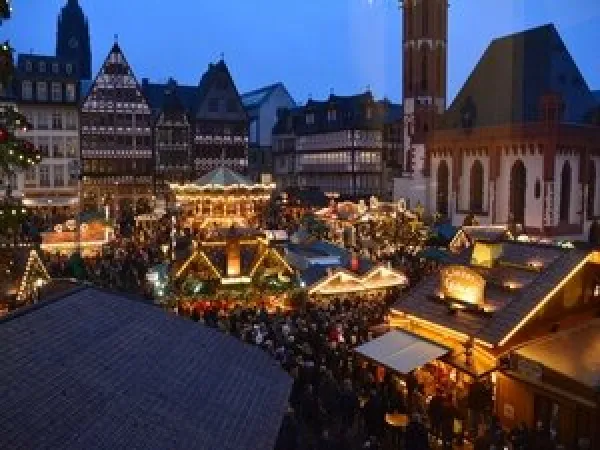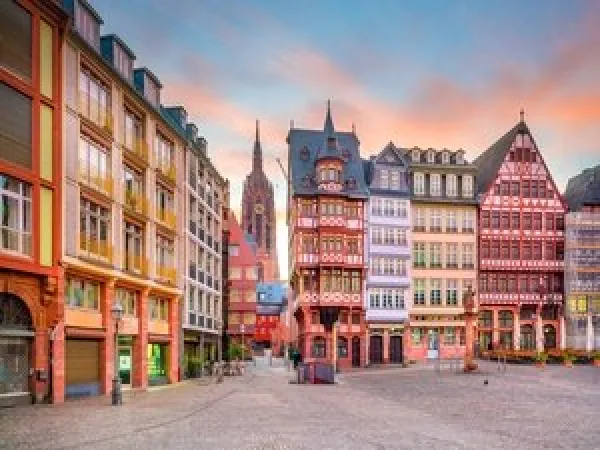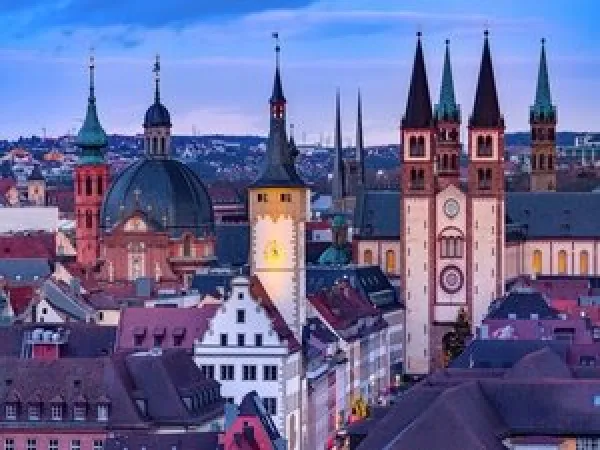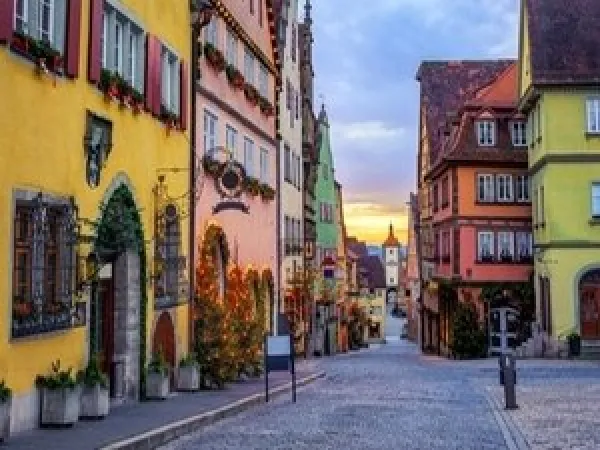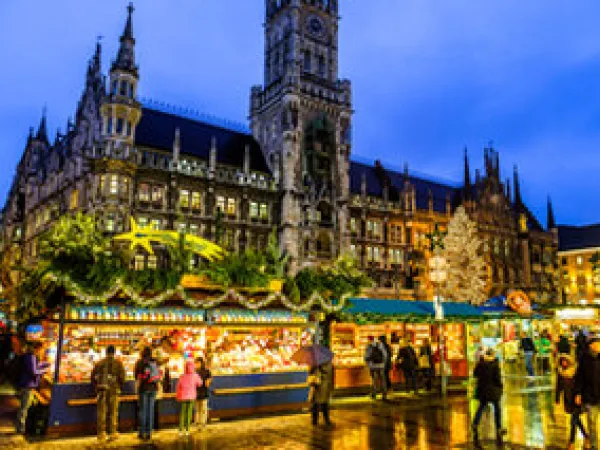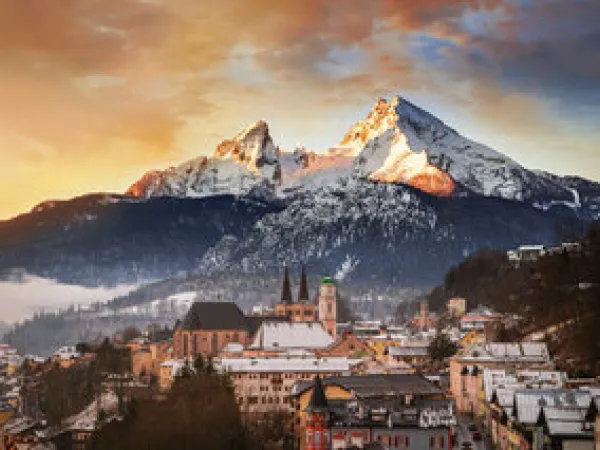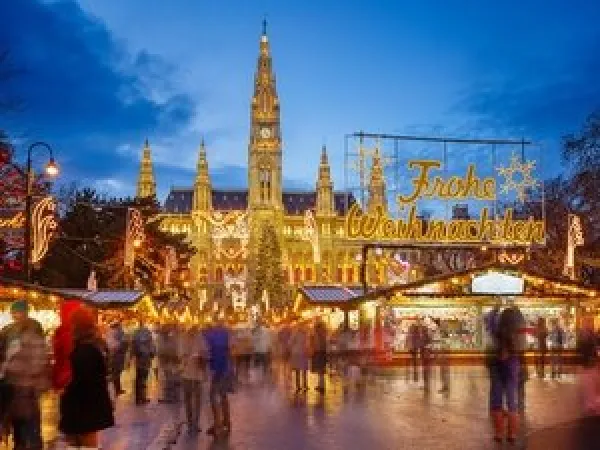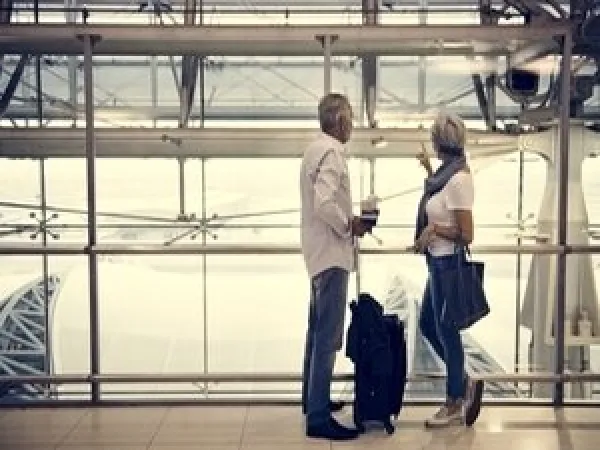Itinerary
Itinerary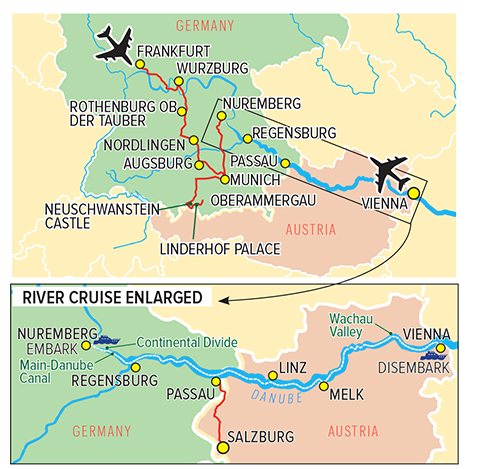
Dates & Pricing
Dates & PricingDouble Occupancy
$6,550.00
Single Occupancy
$7,650
All prices are per person, land only and include all taxes and fees. Prices are in CAD.
Not included in price:
- International airfare
- Airline baggage fees for additional or over-sized luggage
- Airline fuel surcharges if there is a change in fuel prices
- Gratuities for Tour Director and Driver
- Meals and activities not specified in the itinerary
- Any personal expenses
- Travel Insurance
- Pre or post tour arrangements
*Passport must be valid for at least 3 months beyond your return date and must contain sufficient blank pages for entry and exit endorsements.
*An ETIAS authorization is mandatory for every Canadian Citizen entering the Schengen Area. Please ask your Travel Agent for more information.
Tour Highlights
Tour Highlights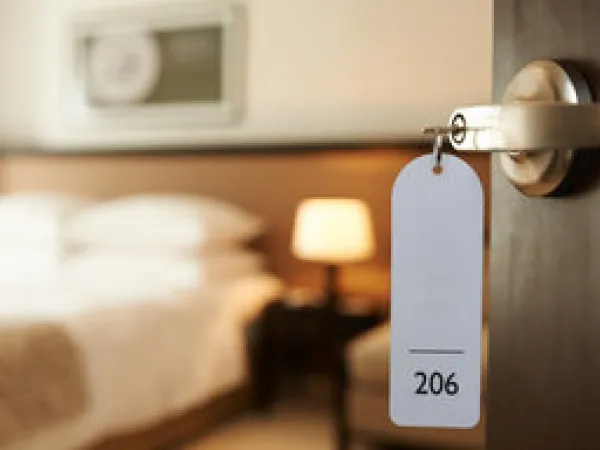
Multi-Night Stays in Frankfurt, Wurzburg, Munich, Salzburg & Vienna
Sometimes a day just isn't enough to take in all a place has to offer.

City Tours of Frankfurt, Wurzburg, Nuremberg, Augsburg, Munich, Innsbruck, Salzburg & Vienna
Enjoy an indepth guided City Tour of Frankfurt, Wurzburg, Nuremberg, Augsburg, Munich, Innsbruck, Salzburg & Vienna
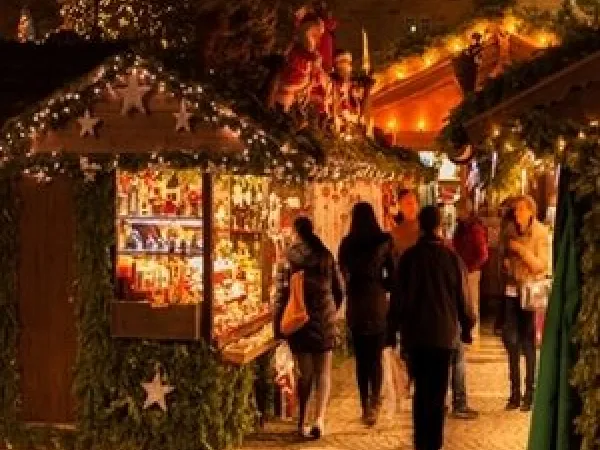
Christmas Markets of Frankfurt, Wurzburg, Rothenburg, Nuremburg, Augsburg, Munich, Innsbruck, Salzburg & Vienna
Christmas time is here! Explore the many Christmas Markets in Germany, drink hot mulled wine as you browse the many different Germanic ornanments, view the towering Christmas trees and shop around for some of the many original Christmas gifts. Enjoy access to the Christmas Markets of Frankfurt, Wurzburg, Rothenburg, Nuremburg, Augsburg, Munich, Innsbruck, Salzburg & Vienna.

UNESCO World Heritage Site Wurzburg Residence
Unlike many Palaces, the Wurzburg Residence was built in its entirety, with short interruptions, almost within a single generation. The architects drew their insirpation from an area extending from Vienna to Paris and from Genoa and Venice to Amsterdam. The building emobides the attainments of Western architecture of its day, French chateau architecture, Viennese baroque and the religious and secular architecture of northern Italy and is a synthesis of the arts of astonishing universality.

Tasting of a Rothenburg Fried Snowball, Nuremberg Gingerbread, and Munich Hot Mulled Wine
You will have the opportunity to taste a Fried Snowball in Rothenburg, otherwise known as a Schneeball. It is a pastry made from shortcrust pastry traditionally decorated with white confectioner's sugar.
In Germany, when you think of Christmas, you think of Nuremberg Lubkuchen, the city's famous gingerbread. These sweet and spicy treats have been baked for more than 600 years and are loved by young and old alike.
While in Munich before you explore the Christmas Markets, you will be given the chance to taste some Hot Mulled Wine, a spiced wine made up of red wine along with various different spices and is served warm.
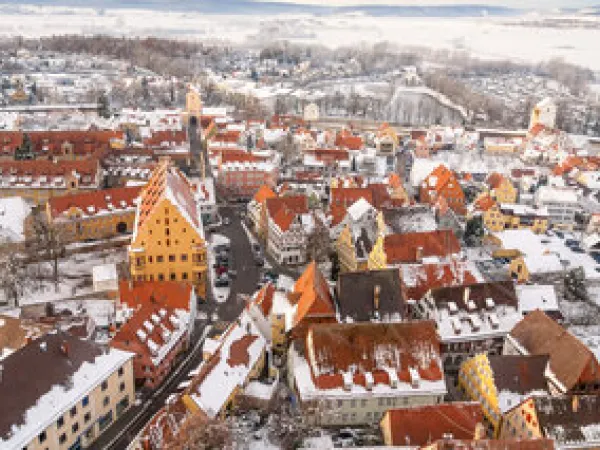
Romantic Road of Bavaria
The name Romantic Road gives expression to the feelings experienced by many people when they see the medieval towns or the fairy-tale castle of Neuschwanstein. The Romantic Road reveals the wealth of European history, art and culture awaiting travellers.
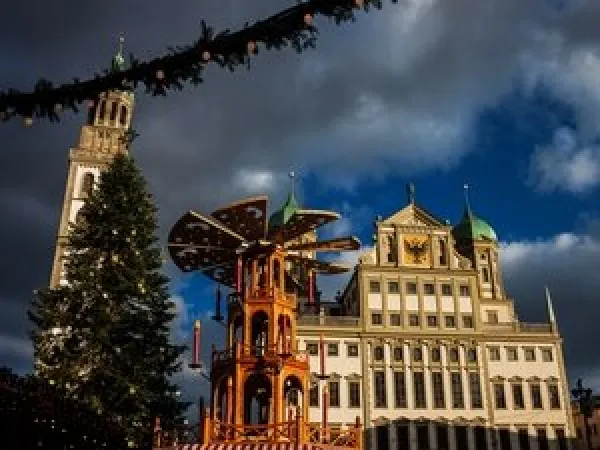
Medieval Towns of Nordlingen, Augsburg & Oberammergau
Nordlingen with its wholly intact city walls with their turrets and gatehouses, and magnificent Medieval and Renaissance houses. Augsburg with its grandeur buildings from the Gothic, Renaissance and Rococo eras. Oberammergau, well known for its long tradition of woodcarving craftsmen and the Bavarian themes, fairy tales and religious scenes carved into the many homes and buildings. There are many attractions throughout these German towns that will catch your eye.
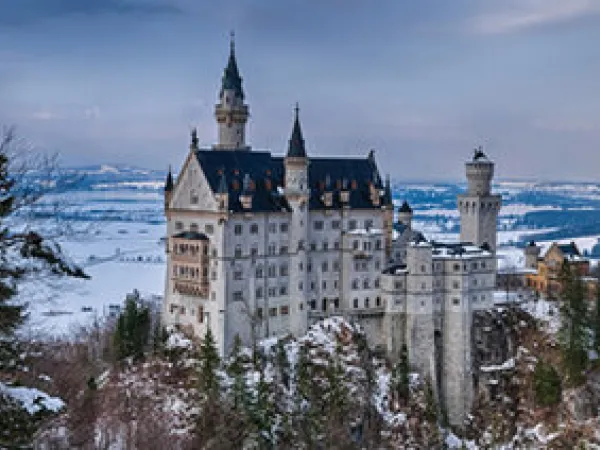
UNESCO World Heritage Sites Neuschwanstein Castle and Linderhof Palace
Neuschwanstein Castle is considered to be the most popular castle in Europe, in part because of the faiy tale architecture that make this castle. The castle illustrates the ideals and longings of King Ludwig II more vividly than any of his other buildings. The castle was not designed for royal representation, but as a place of retreat. Here, King Ludwig II escaped into a dream world - the poetic world of the Middle Ages.
Linderhof Palace was the first of three buildings King Ludwig II was making plans to build. However neither of the plans King Ludwig II envisaged were ever built. Instead, the new building developed around the forester's house belonging to his father Maximilian II, which was located in the open space in front of the present palace and was used by the king when crown prince on hunting expeditions wit his father. Linderhof Palace was the only large palace King Ludwig II lived to see completed.
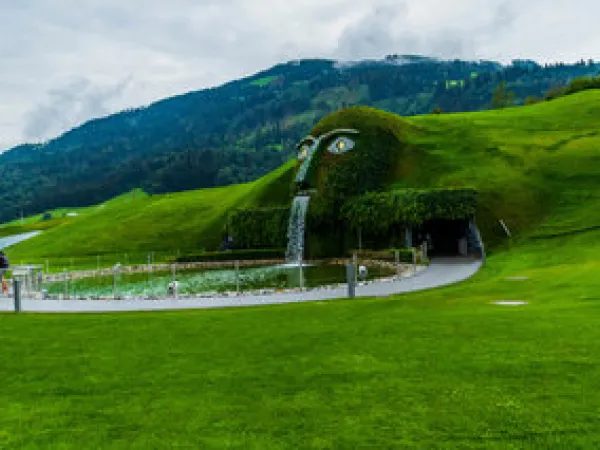
Swarovski Crystal World
Multimedia artist André Heller created a world of wonder to celebrate Swarovski’s hundredth anniversary in 1995. Heller’s thematic centerpiece for Swarovski Crystal Worlds was the shape of the Giant. The realm of the Giant hosts a rich collection of precious items housed in 18 Chambers of Wonder. Here, in a world of fantasy inspired and designed by some of the world’s greatest artists, visitors can believe in miracles for just a moment.
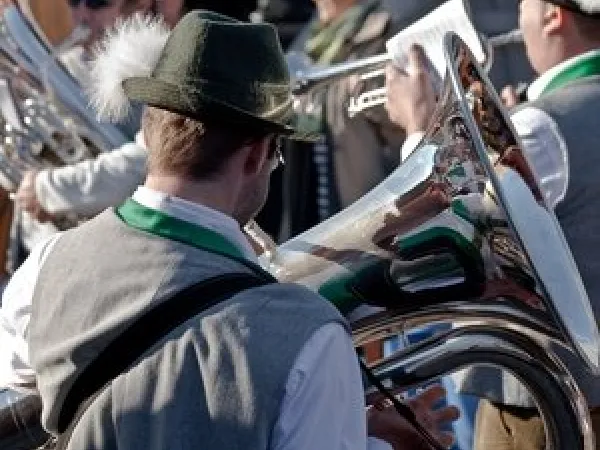
Tyrolean Music & Folk Dancing
Enjoy an included dinner with entertainment! Tyrolean Music and Folk Dancing is mostly associated with Schuhplattler, Landler, polka and waltz.
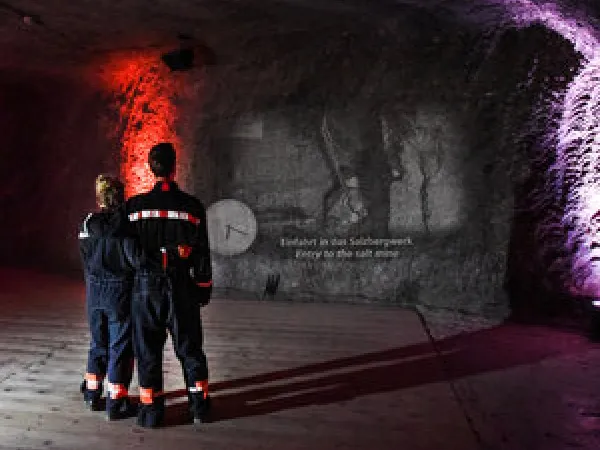
Berchtesgaden Salt Mine
Sparkling atmospherically and impressively adventurously, the Salt Mine shines in a new light. It is a world of the local miners, who have been working in the active part of the Salt Mine day-in, day-out, for centuries and whisk the visitors away into their aforementioned world. Highlights, such as the slide or the journey on the Mirror Lake (Spiegelsee) melt with gripping information over the indispensible vital element of salt. An adventure with many unforgettable impressions, which you not only experience during the course of the SaltTimeJourney in Berchtesgaden, but will also experience with all of your senses!
Take a trip through salt and time in the Salt Mine Berchtesgaden and be a part of the mysterious tour underground, during which you can be astounded by the fascinating, wonderful world of the “white gold”.
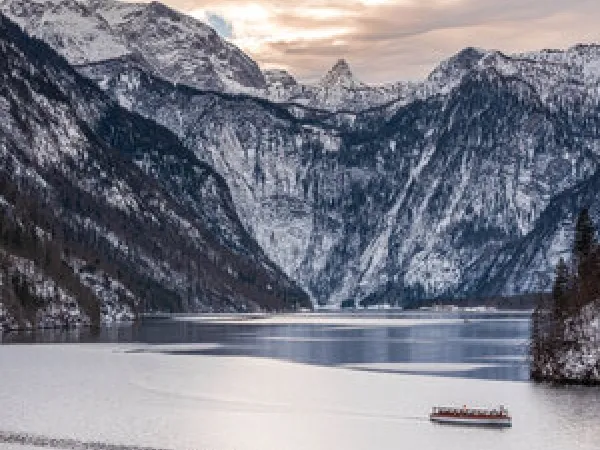
Lake Koenigssee
Lake Konigssee lies just a couple of miles south of the town of Berchtesgaden and is Germany's deepest and cleanest lake. Bavarian royalty and the local rulers of Berchtesgaden and Salzburg hunted here centuries ago. The Konigssee is a wonderful example of a crystal-clear apline lake.
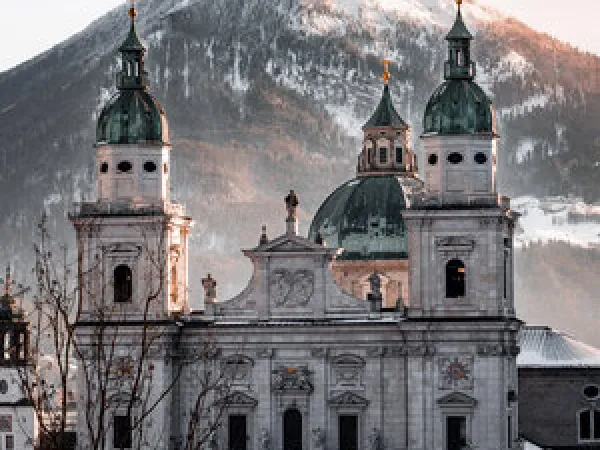
Salzburg Cathedral
Of its numerous churches, the cathedral is Salzburg's most important sacred building. With its mighty dome and two towers, it leaves its own distinctive, and absolutely impressive stamp on the city skyline. Salzburg Cathedral is an imposing tribute to the Early Baroque. Visitors are greeted by the resplendent façade made of Untersberg Marble. Looking down from it are four monumental statues: Apostles Peter and Paul holding a key and a sword, as well as Salzburg's two patron saints, Rupert and Virgil, clasping a salt vessel and a model of the church.
The many treasures of this cathedral include a bronze baptismal font (1311) with lions at its base (1200), in which Wolfgang Amadeus Mozart and Joseph Mohr, the man who wrote the words for "Silent Night!", were both christened. Other highlights include the imposing main organ, the cathedral gates by Schneider-Manzell, Mataré and Manzú, as well as seven bells.
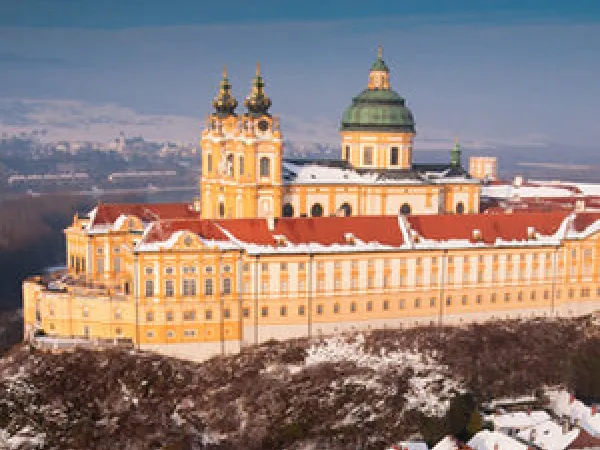
Melk Abbey & Museum
More or less in the middle between Vienna and Linz, a fascinating Baroque building sits on a granite rock overlooking the Danube, visible from afar like a fortress: Melk Abbey. From a distance one can already see the dome of the abbey church and the two towers, with golden ornaments, which look like hands raised towards the sky: the magnificent structure is clearly a sacral building and not a secular palace.
Learn more about Melk abbey’s history and present on a tour that starts in the Prelate’s Courtyard and see the Imperial Staircase and the Imperial Corridor. The abbey museum with the exhibition “The Path from Yesterday to Today” shows the abbey’s historical significance and its current tasks. The Baroque Marble Hall, the former dining hall for imperial guests is the last room you visit in the Imperial Wing. Continue to the balcony with its excellent view of the Danube valley, the town of Melk and the Western façade of the abbey church. The Baroque library leaves a lasting impression because of its harmonious and detailed architecture. The manuscripts and incunabula in the middle showcase bespeak the importance of Melk abbey library then and now.

